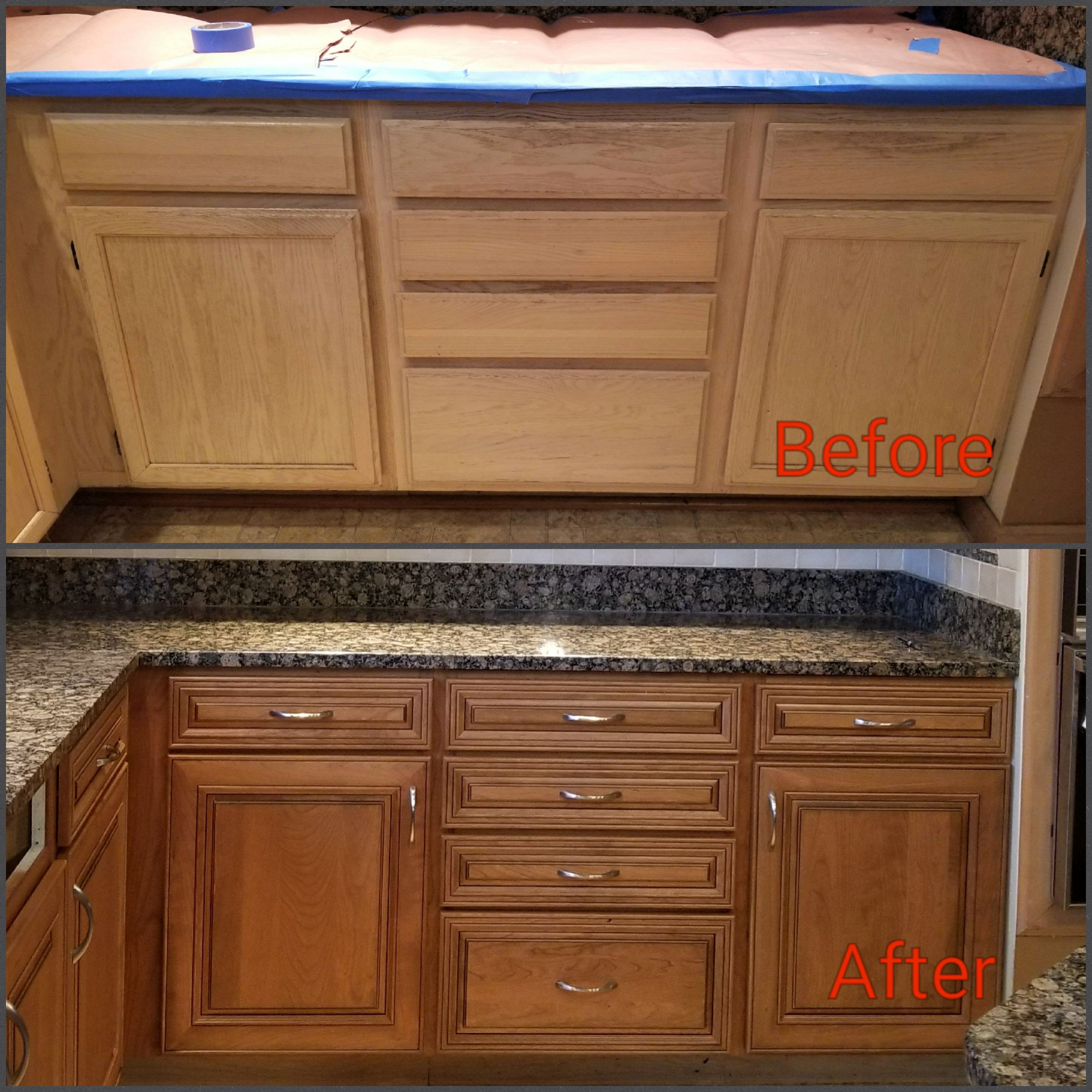Stylish Finishes: Delving into Tactile Quality in Cabinet Refinishing

Cabinet refinishing is a technique that allows property owners to bring new life into their kitchens, bathrooms, and other spaces without the high cost of a total renovation. If your cupboards are showing signs of age but still have good structural integrity, refinishing can be a great solution. This method involves getting ready, smoothing, and applying new finishes or paints to create a new look that matches your evolving style. In this article, we will discuss everything you need to know about cabinet refinishing, including useful tips for do-it-yourselfers and insights into expert assistance.
As trends in interior design change, the allure of expertly refinished cabinets remains a consistent choice for numerous homeowners. From comprehending the differences between refinishing and upgrading to uncovering popular color trends for the next year, we will guide you through the multiple aspects of cabinet refinishing. Whether custom cabinet refinishing are looking to transform your kitchen with a contemporary edge or infuse a vintage charm to your bathroom, you will discover how to obtain a stylish finish that improves your home’s aesthetic and value.

Understanding Cabinet Refinishing
Cabinet refinishing is a budget-friendly and transformative solution for revitalizing your cabinets without the need for a full replacement. It includes taking off, smoothing, and applying new coatings, such as color or dye, to enhance the visual aspect of your cupboard. This process not only enhances the look but also acts to protect the wood and lengthen its durability. Homeowners often choose restoration as a way to revive their spaces while keeping the initial structure of their cabinets.
The decision to restore instead of change can be influenced by several factors. Many people appreciate the ability to conserve money and materials while achieving a comparable aesthetic change. In addition to the savings, refinishing allows for greater personalization, as homeowners can choose from a selection of shades, textures, and topcoats to suit their preferences. Understanding the specific needs of your cupboards is vital to ascertain if they are suitable possibilities for restoration.
To ensure the most of cabinet refinishing, it's essential to adhere to proper techniques and use high-quality materials. From the initial assessment of your cabinets to the final touch-up, each phase plays a crucial role in guaranteeing a successful outcome. DIY enthusiasts often seek resources and tips to assist them manage the refinishing process, while those who prefer expert assistance look for specialists who can provide exceptional results. Regardless of the route chosen, being educated about cabinet refinishing establishes the foundation for a gratifying and chic upgrade to your home.
This Cabinet Refinishing Procedure & Methods
The furniture refinishing process starts with adequate preparation, which is key to attaining a long-lasting finish. Start by removing all fittings and doors from the cabinets. This action ensures that you can access every surface without obstruction. Scrub the cabinets carefully to remove any oil, dirt, or grime. Sanding is generally the next step; it scuffs the finish to assist the new finish adhere more effectively. For a smoother result, you could consider use a high-quality sandpaper, followed by a vacuum or damp cloth to eliminate any dust debris.
Once the cabinets are ready, you'll need to choose on the finish, whether it’s painting or stain. If you decide to paint, applying a primer designed for cabinets can improve durability. For staining, prepare to apply a few coats, allowing each to cure as specified on the manufacturer's instructions. It’s important to use high-quality paints or stains that match your desired color scheme and finish. Consider trends like dual-color cabinets or vintage looks to add your unique style to your environment.
Finally, achieving a professional finish often involves techniques that boost the overall appearance. Using a paint sprayer can offer a more uniform application than traditional brushes or rollers. If using a brush, opt for a high-density foam or nylon brush to reduce brush strokes. Top coats, such as polyurethane, can protect your finish and add an extra layer of gloss. Exercise patience during this final phase, ensuring that each layer dries completely before applying the next for the optimal outcome.
Trends and Inspiration in Cabinet Restoration
As we transition into 2024, the trends in cabinet refinishing are shifting towards daring displays of personality and imagination in interior design. One popular choice is the use of two-tone cabinets, where the top and bottom cabinets are refinished in dissimilar colors. This approach not only provides visual interest but also allows homeowners to experiment with their color combinations without cluttering the area. For instance selecting a dark navy lower cabinet combined with a bright white upper, or a stylish sage green against real wood, this style offers a fresh take that can boost any kitchen or bathroom.
Antique and worn finishes are also making a comeback, providing a lovely, rustic aesthetic. Homeowners are increasingly seeking ways to give their cabinets a welcoming look, utilizing techniques like glazing or washing to create depth and character. These methods allow antique cabinets to feel like unique treasures rather than obsolete elements. By celebrating imperfections and highlighting the organic patterns of wood or adding eclectic stains, refinishing projects can showcase individual styles and the history of the home.
Sustainability is another important element in cabinet refinishing. With a increasing focus on eco-friendly practices, many are turning to safe paints and stains, as well as budget-friendly materials that minimize waste. The trend encourages a mindful approach to design, proving that stunning renovations can also be ecologically sound. Innovative refinishing techniques, such as using reclaimed materials or safe finishes, not only enhance the aesthetic but also foster to a safer living space, merging style with sustainability.
